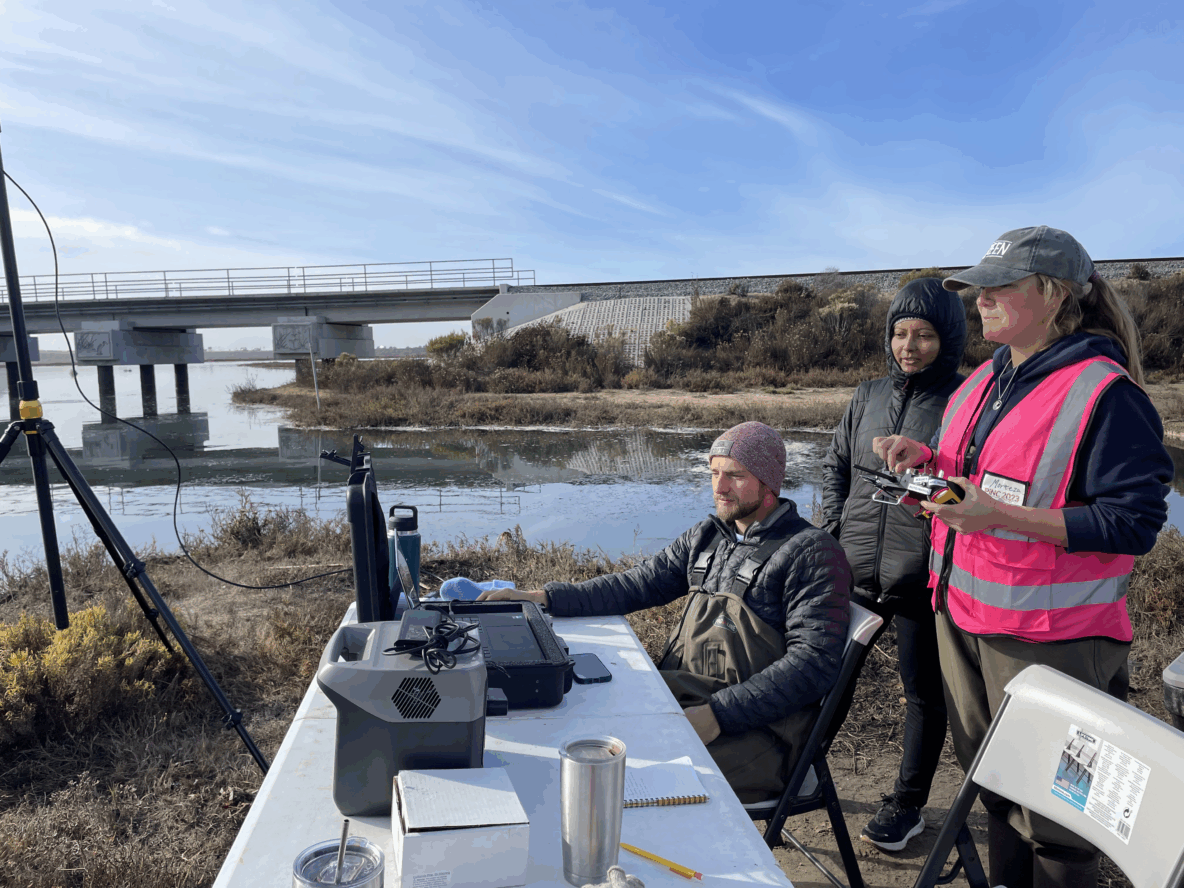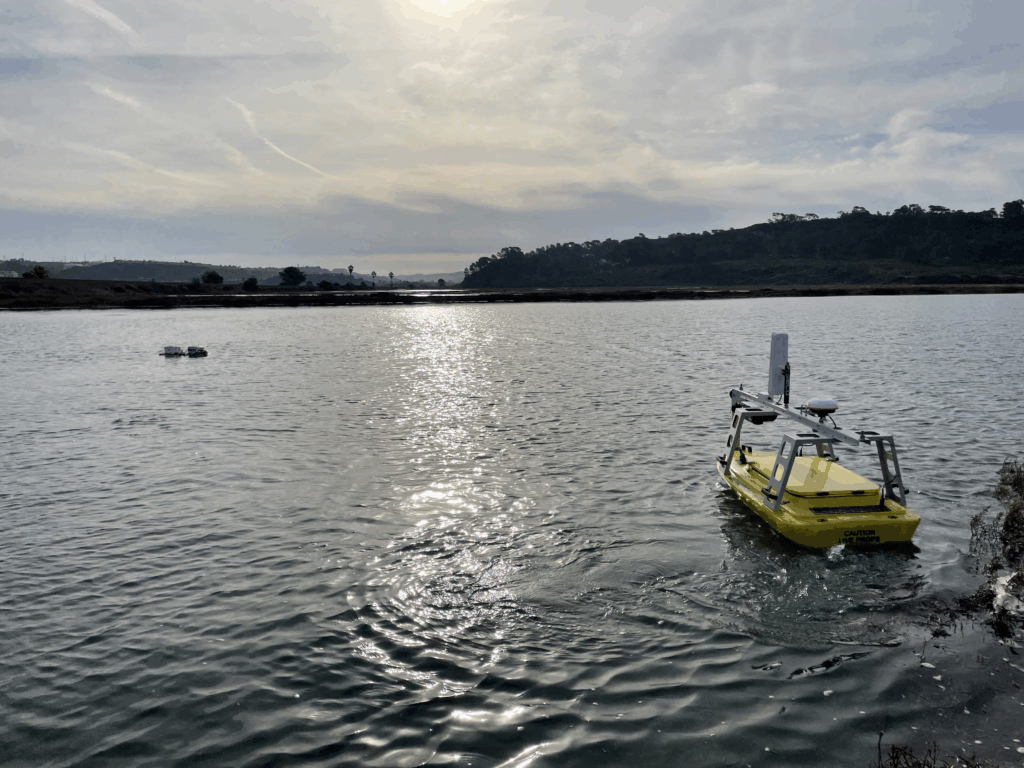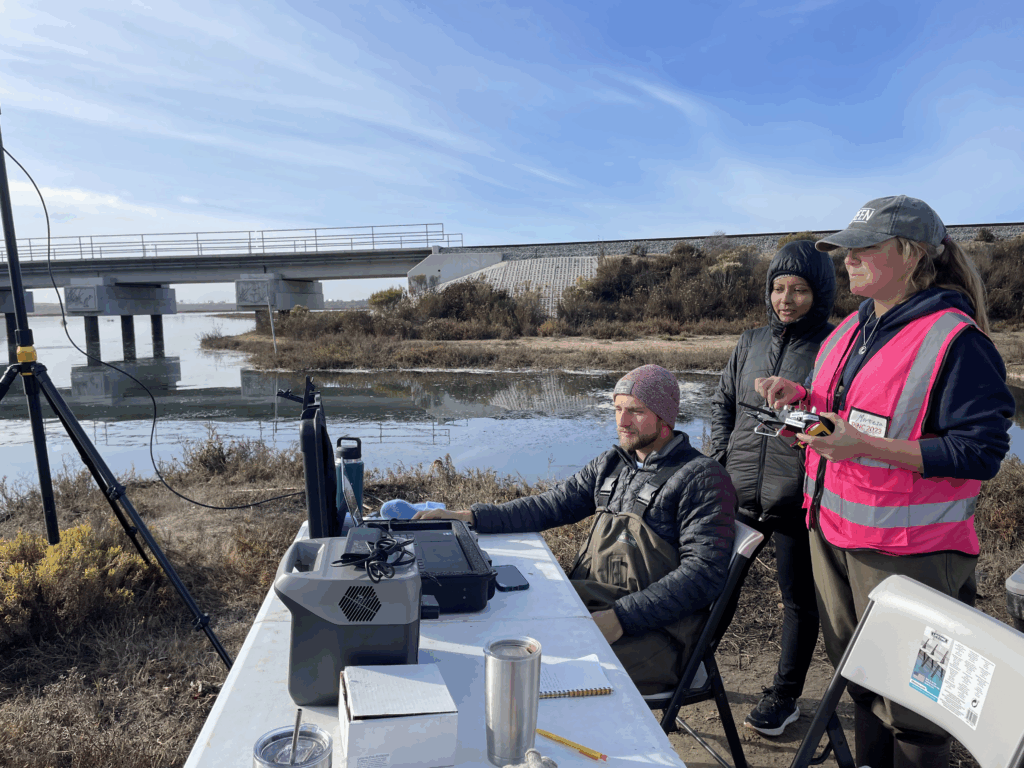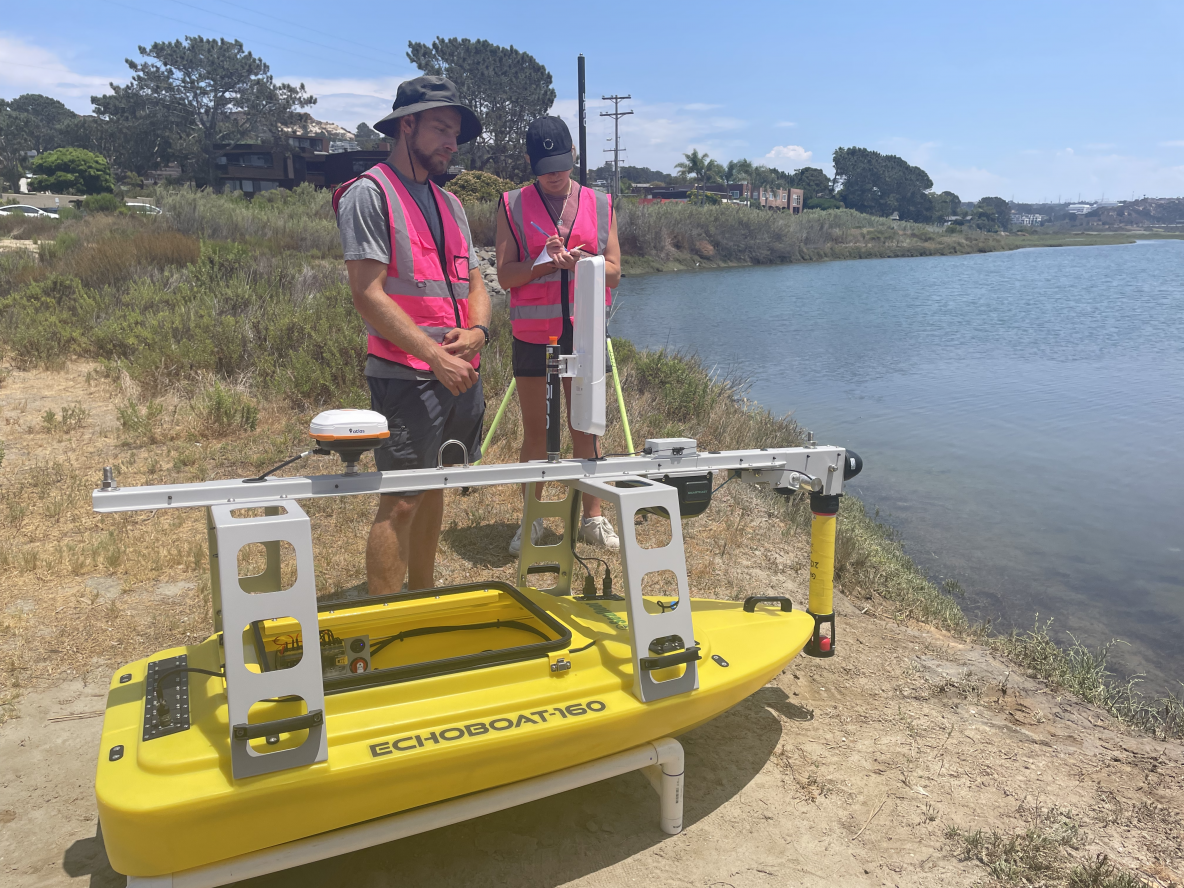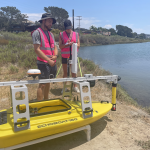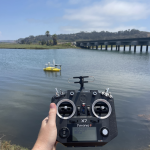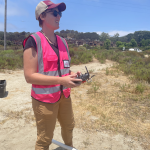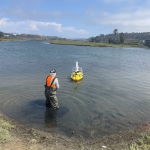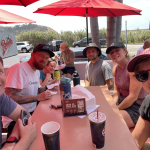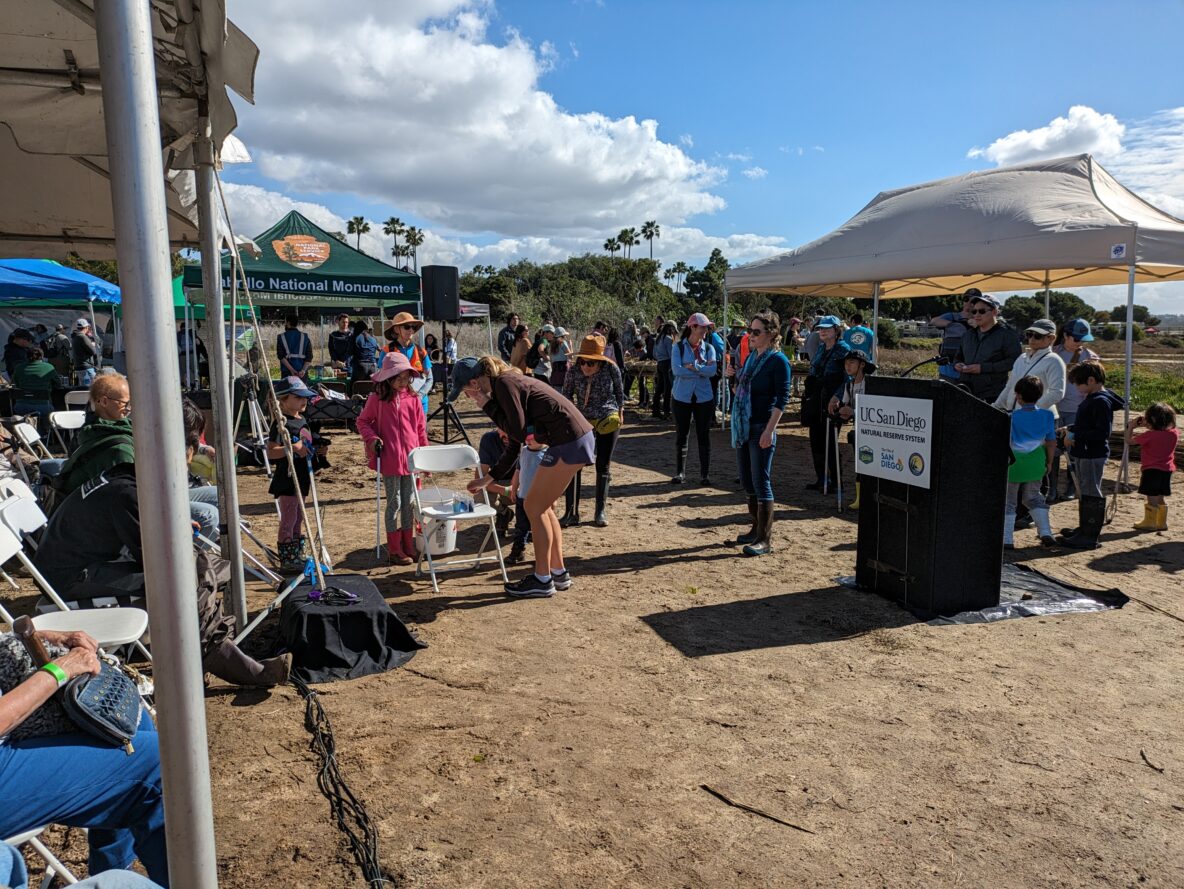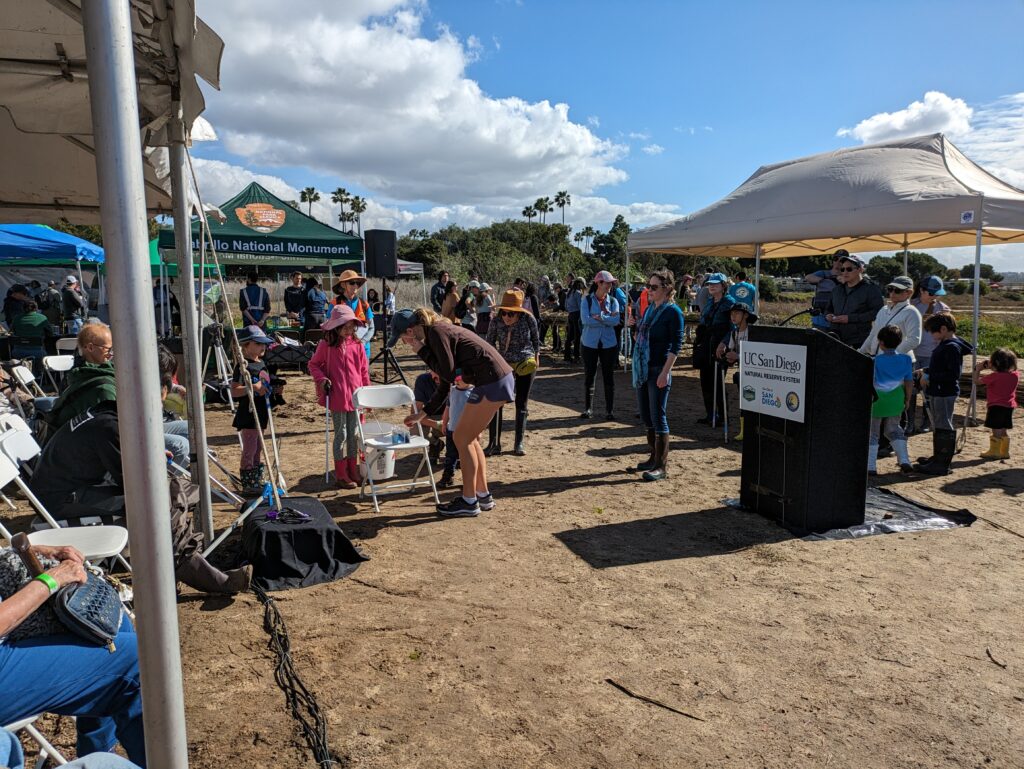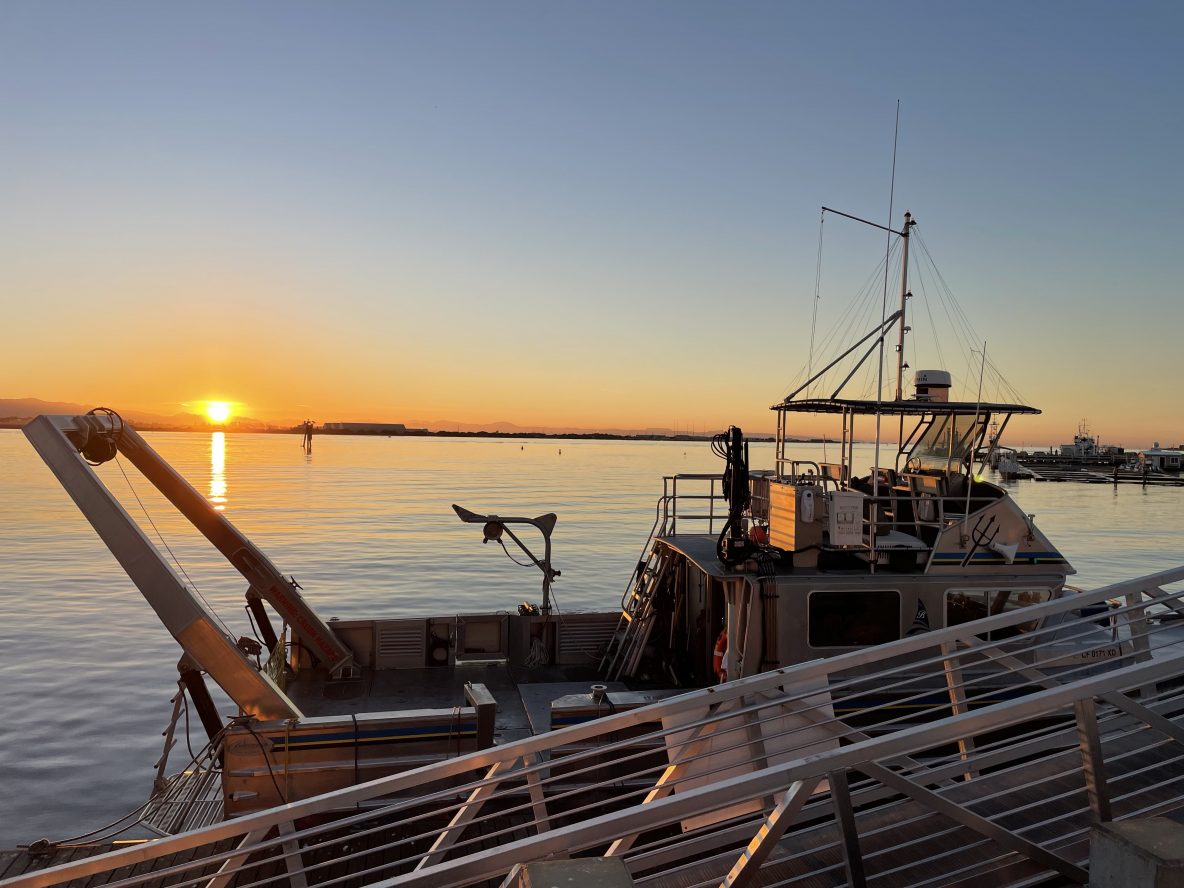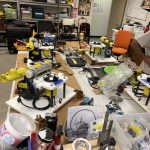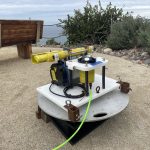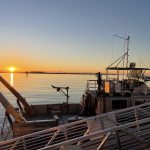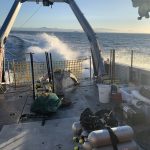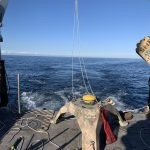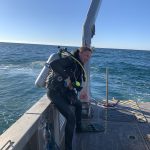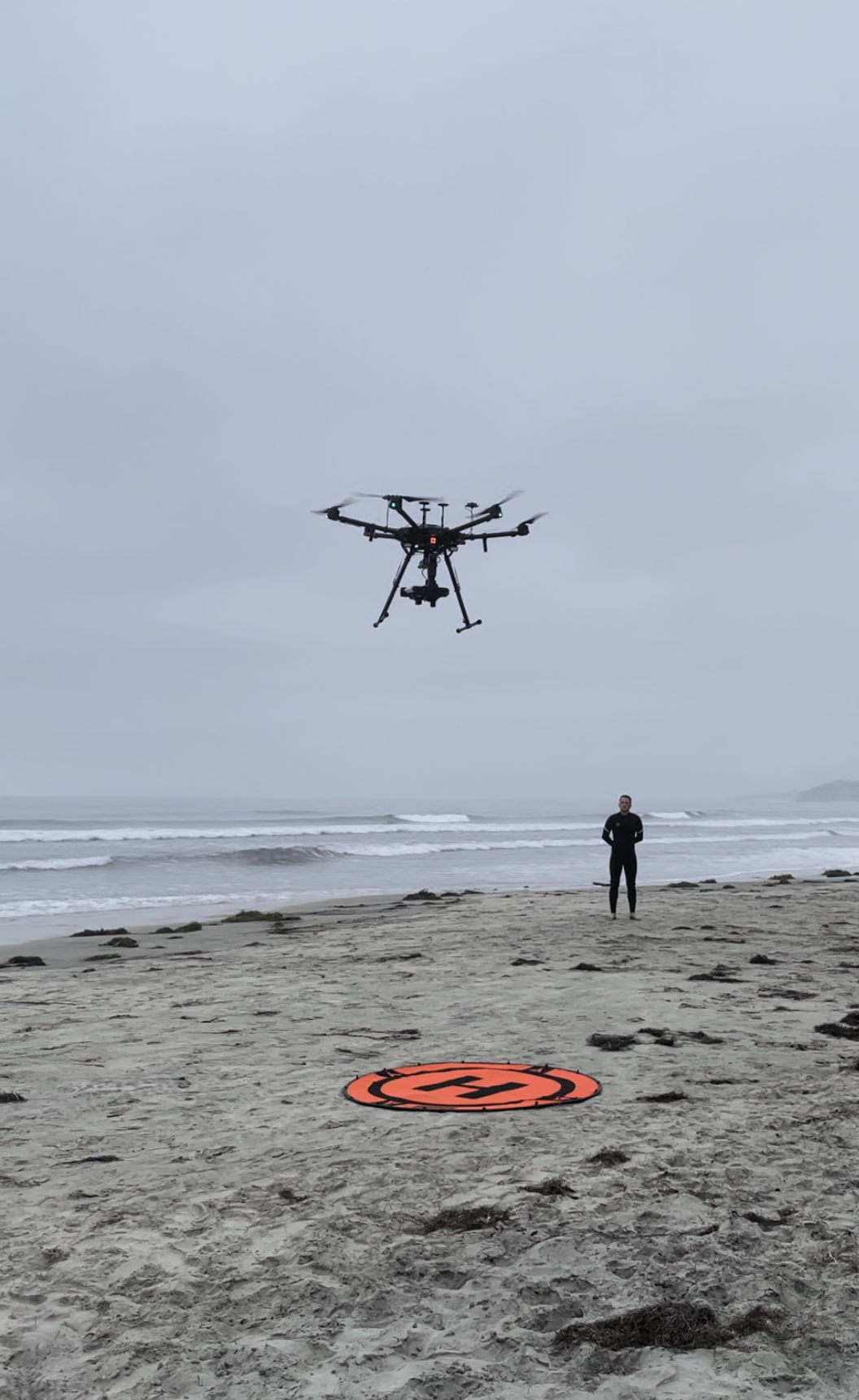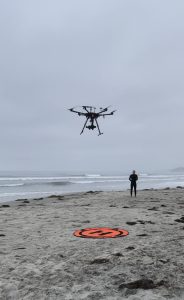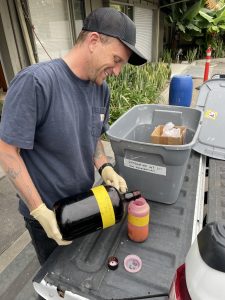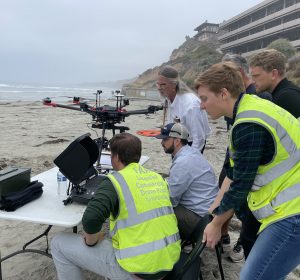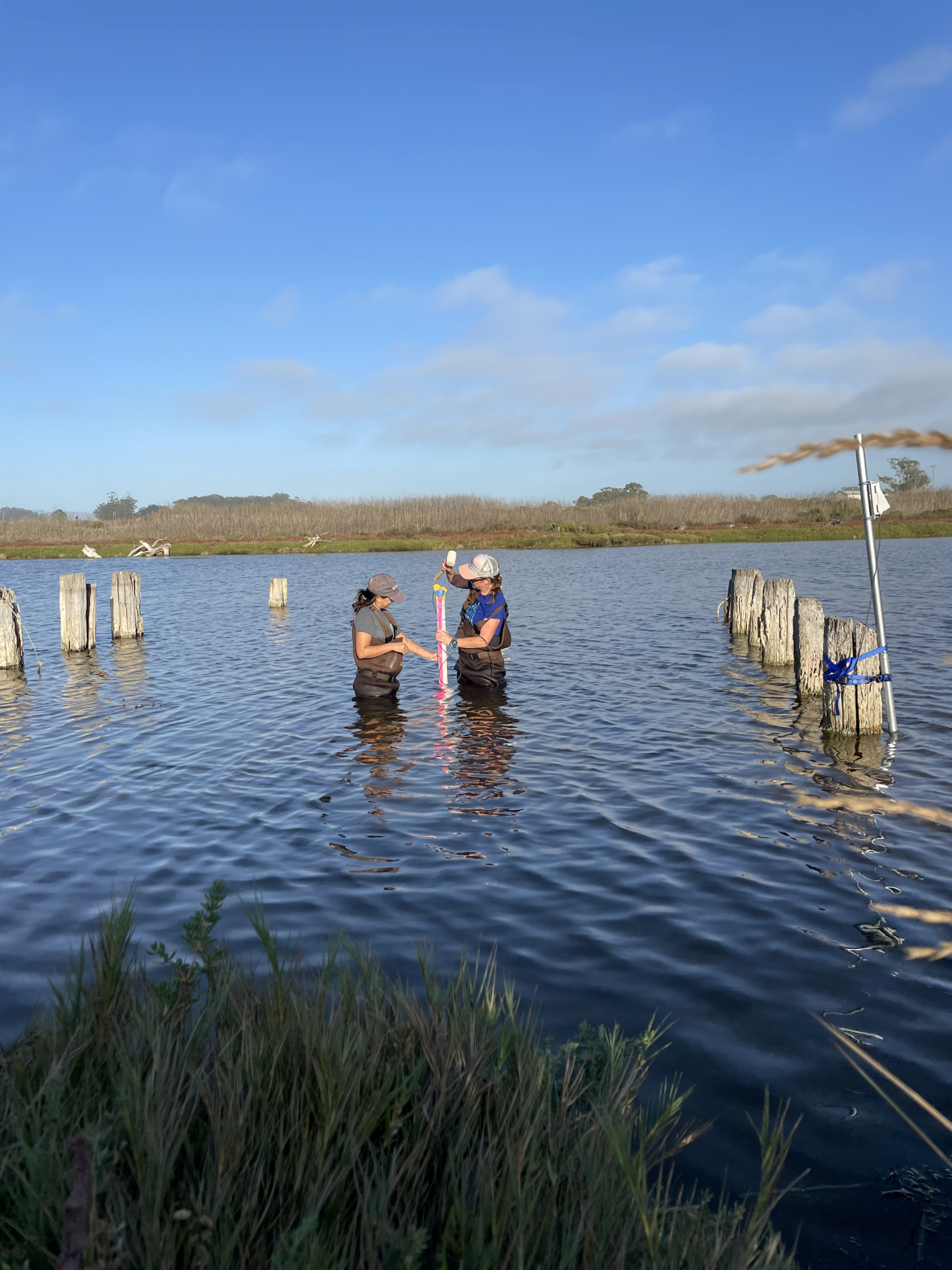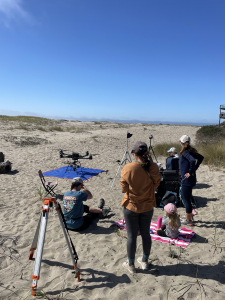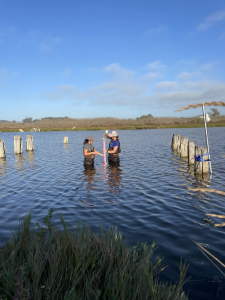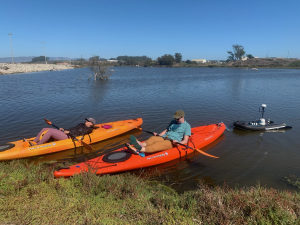This week, Giddings lab members went near and far to tell people about our work!

All the places we spoke!
Giddings lab members Niv Anidjar and Victoria Boatwright went off to attend the Coastal & Estuarine Research Federation (CERF) Biennial Meeting in Richmond, Virginia.
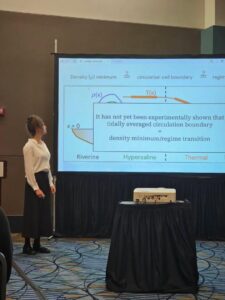
Anidjar presenting her work at CERF. Nov 10, 2025.
Anidjar started off the whole conference of talks presenting her work, “Subtidal circulation, salinity, and temperature structure in a seasonally inverse, low-inflow estuary,” at 8am (!) in the Mixing & Transport in estuaries & coastal systems session.
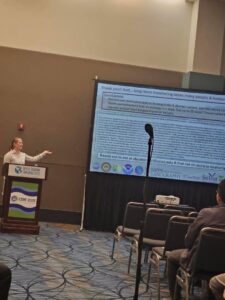
Boatwright presenting at CERF. Nov 10, 2025.
Boatwright followed after her, presenting at 8:15am, discussing her work, “Storm impacts to estuarine mixing & biogeochemistry in a low-inflow estuary,” in the Freshwater inflow alteration effects session.
This year, CERF had over 1,500 participants and there were several exciting workshops and sessions. Richmond showed off its charm with the James River and the downtown area with the State Capitol and several murals. While exploring the trails along the estuary, we discovered some real-time water quality maps about sewer system overflows, which can be viewed at: https://rocketpop.co/4docZF2

QR code to real-time (last 48 hour) water quality map along the James River.
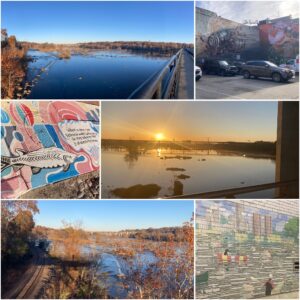
Richmond is home to the River James & many murals around the city!

Zhang et al at CICESE’s Student Symposium.
At the same time, Helen Zhang went to Ensenada, MX, to present her work, titled “Coastal trapped waves in the Southern California Bight – where does it come from, where does it go?” as part of CICESE’s III Simposio de Estudiantes de Oceanografía Física on November 10-11.
Finally, Ágata Piffer Braga presented at the ~prestigious~ Physical Oceanography seminar at our own Scripps Institution of Oceanography! Her talk was titled “The Evolution of a River Plume Front.” Now the SIO community knows more about river plumes 🙂

Piffer Braga speaking at the SIO PO seminar. Nov 12, 2025.

